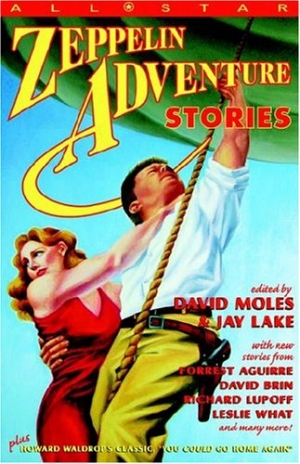Birthday Reviews: Forrest Aguirre’s “Matriarch”

Forrest Aguirre was born on July 29, 1969.
Aguirre’s career began around the turn of the millennium with several short stories appearing in various magazines and several Wheatland Press projects. He co-edited Leviathan, Volume Three with Jeff VanderMeer, which earned them a nomination for the Philip K. Dick Award and won them a World Fantasy Award. He also edited Leviathan 4: Cities and Polyphony 7, the latter with Deborah Layne.
Aguirre wrote “Matriarch” for inclusion in the David Moles and Jay Lake edited All-Star Zeppelin Adventure Stories. The next year, Aguirre included the story in his collection Fugue XXIX.
“Matriarch” is a very short story, almost a vignette, which does not provide any real context for the story itself. It is set aboard a zeppelin which appears to have a crew of three: the titular pilot and her two crewmembers, LeFevre and LeBlanc. More important than setting or context is the story’s imagery. Aguirre describes the zeppelin in short terms, but they are evocative. The airship has clearly recently been in a battle and the losing forces, officials from the city below it, are dangling from ropes lowered from the zeppelin, skirting the heads of children in the city who have turned cannibal.
Even in their moment of triumph and riding above the ravenous throngs, the Matriarch and her crew don’t feel completely safe. LeFevre finds himself falling into the crowd below the zeppelin, and is killed and stripped clean by the children, almost as if he had fallen into a river swarming with piranhas. Losing LeFevre and the dangling officials to the cannibals allows the zeppelin to flee the scene of its victory and the carnage below, however, LeBlanc misreads the situation, much to his dismay.
There is little story and little setting in “Matriarch,” but Aguirre is fully able to describe the scenes through which the Matriarch zeppelin is flying. The imagery is almost cinematic in nature even if he doesn’t give too many specifics on what his characters, the city, or the airship look like. When he does deploy his expressive powers, Aguirre gets fully value.